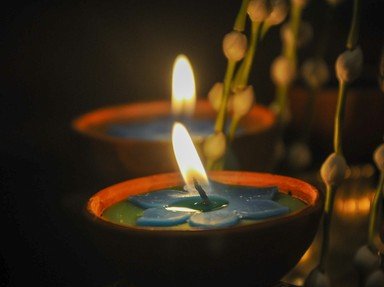Quiz Answer Key and Fun Facts
1. The two most common ways of disposing of a body after death are burial and cremation. How would Hindus traditionally deal with their dead?
2. Most people know what burial entails, but which of the following best describes a "sky burial"?
3. The Roman Catholic Church forbids cremation because they believe it will prevent a physical resurrection. True or False?
4. In Islam burial is required, except for in extreme circumstances. In which orientation would a Muslim body be placed in the grave?
5. In life, a commited Sikh would always wear the 'five articles of faith'. After death what should happen to these articles?
6. Which of the following religions does not traditionally require ritual bathing of the body after death?
7. In the Baha'i faith, a piece of inscribed jewellery is put on the body before burial. Which of the following is used?
8. In the Eastern Orthodox Church, the coffin is traditionally open during the funeral service. Among other reasons, this is necessary to allow which particular part of the funeral service to take place?
9. Zoroastrians have a tradition of laying out their dead on specially built structures known as 'Dakhmas'. What is another name for a Dakhma?
10. Of the following choices, which would be the most likely location for a Hindu living in England to scatter the remains of a loved one?
Source: Author
emiloony
This quiz was reviewed by FunTrivia editor
looney_tunes before going online.
Any errors found in FunTrivia content are routinely corrected through our feedback system.
